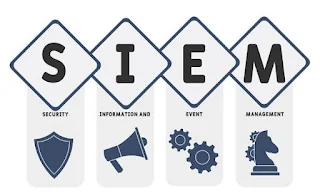How it functions?
SIEM works by collecting and aggregating log data generated throughout an organization's technology infrastructure, including host systems, applications, network, and security devices. The process typically involves the following steps:
1. **Data Collection:** SIEM systems gather data from diverse sources, such as firewalls, antivirus logs, servers, and applications, to create a centralized repository of security-related information.
2. **Normalization:** Collected data is normalized to a common format, allowing for consistent analysis. This step is crucial as different devices and systems may generate logs in varying formats.
3. **Correlation:** The SIEM system correlates and analyzes the normalized data to identify patterns, anomalies, or potential security incidents. It looks for events that, when considered together, may indicate a security threat.
4. **Alerting:** When the SIEM detects suspicious activities or potential security incidents, it generates alerts. These alerts are then sent to security administrators for further investigation.
5. **Incident Response:** SIEM systems often provide tools for incident response. They may include automated response mechanisms or workflows to guide security teams in investigating and mitigating security incidents.
6. **Reporting and Forensics:** SIEM solutions offer reporting features, allowing security professionals to generate reports on security events, compliance, and trends. Additionally, they facilitate forensic analysis to understand the root causes of incidents.
7. **Continuous Monitoring:** SIEM is an ongoing process, providing continuous monitoring of an organization's security posture. It helps organizations stay vigilant against evolving threats and adapt their security strategies accordingly.
By integrating these functionalities, SIEM systems provide organizations with a centralized and proactive approach to managing their cybersecurity, helping them identify and respond to potential threats in real-time.

